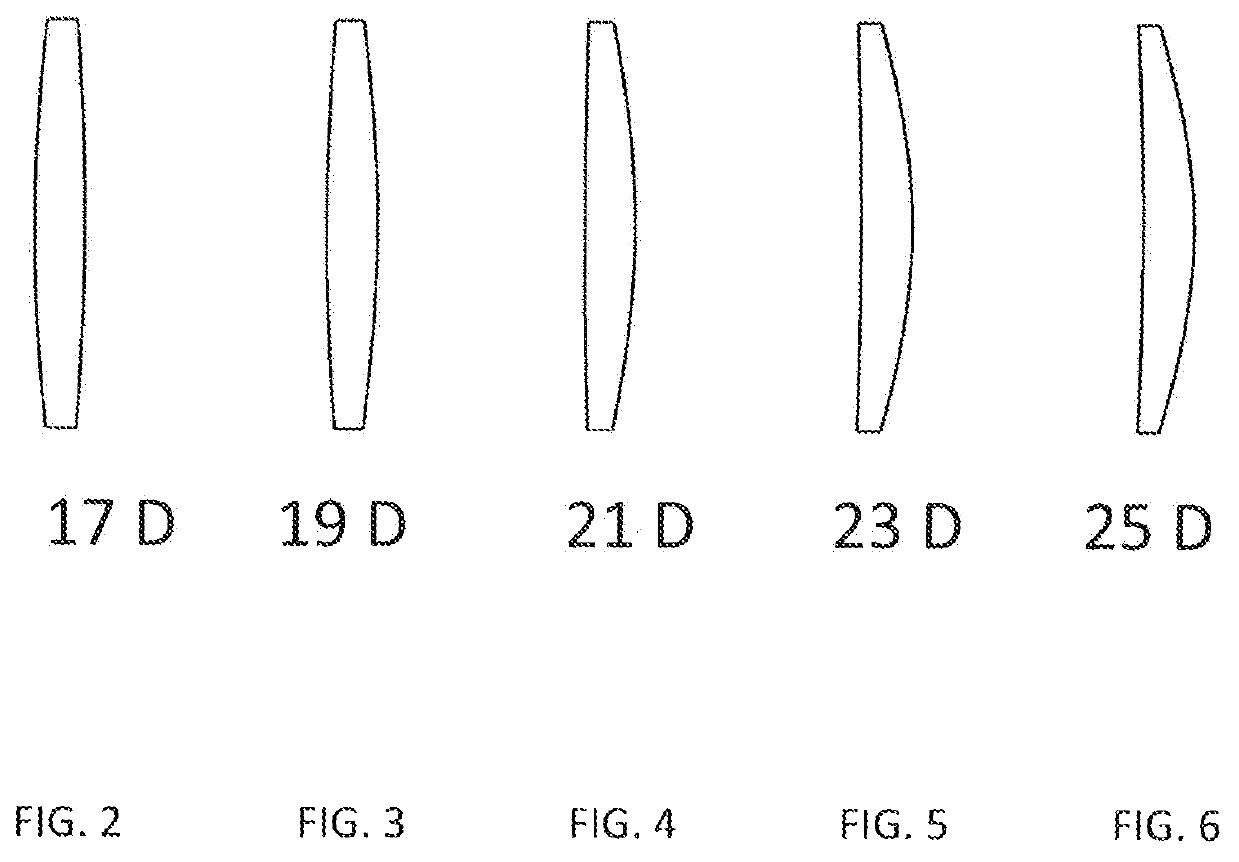Intraocular lens for extended macular vision in patients with macular degeneration
a macular degeneration and intraocular lens technology, applied in the field of intraocular lens for macular degeneration patients, can solve the problems of reduced visual field, reduced benefit profile, and increased risk of corneal decompensation, so as to reduce high-order aberrations, minimise optical aberrations, and enhance image quality
- Summary
- Abstract
- Description
- Claims
- Application Information
AI Technical Summary
Benefits of technology
Problems solved by technology
Method used
Image
Examples
example 1
The Study
[0047]A study was designed and conducted to assess safety and initial outcomes following implantation of this novel intraocular lens in patients with advanced, bilateral age-related macular degeneration. Eight eyes of 7 subjects with ≤1+ cataract (no LOCSIII grading parameter >2), bilateral, advanced geographic atrophy / dry age-related macular degeneration (AMD) and preoperative corrected distance visual acuity ≥0.60 (CDVA; LogMAR), underwent lens extraction and IOL implantation with a hypermetropic post-operative refractive target. The amount of targeted post-operative hypermetropia was decided on after careful discussion with the patient regarding the potential benefits of magnification afforded with spectacles using this approach, balanced with the disadvantages of increased glasses dependence for activities of daily living. All patients had moderate-to-severe visual loss in the operated eye and so opted to have hypermetropic outcomes of 1.5 D to 4.5 D depending on indivi...
PUM
 Login to View More
Login to View More Abstract
Description
Claims
Application Information
 Login to View More
Login to View More - R&D
- Intellectual Property
- Life Sciences
- Materials
- Tech Scout
- Unparalleled Data Quality
- Higher Quality Content
- 60% Fewer Hallucinations
Browse by: Latest US Patents, China's latest patents, Technical Efficacy Thesaurus, Application Domain, Technology Topic, Popular Technical Reports.
© 2025 PatSnap. All rights reserved.Legal|Privacy policy|Modern Slavery Act Transparency Statement|Sitemap|About US| Contact US: help@patsnap.com


